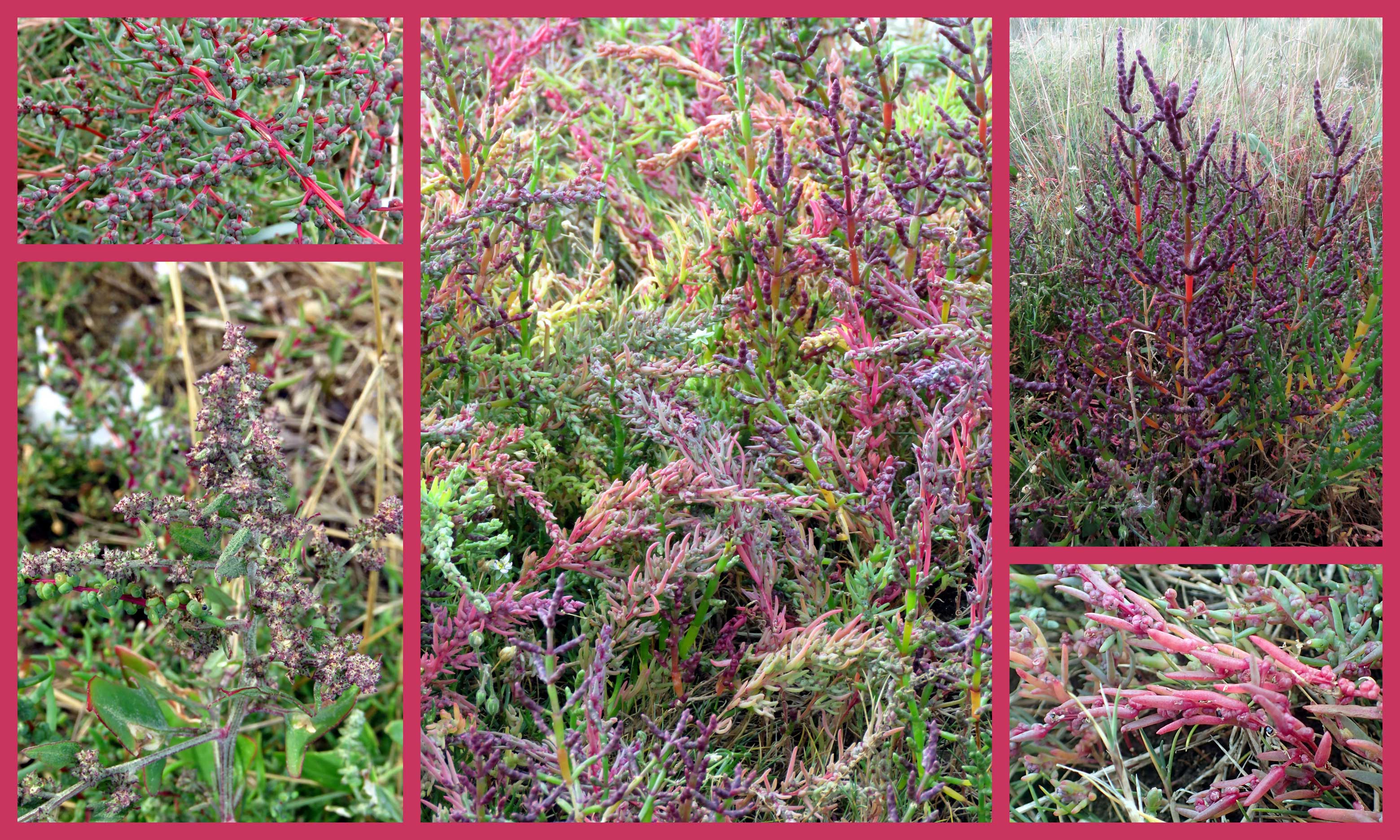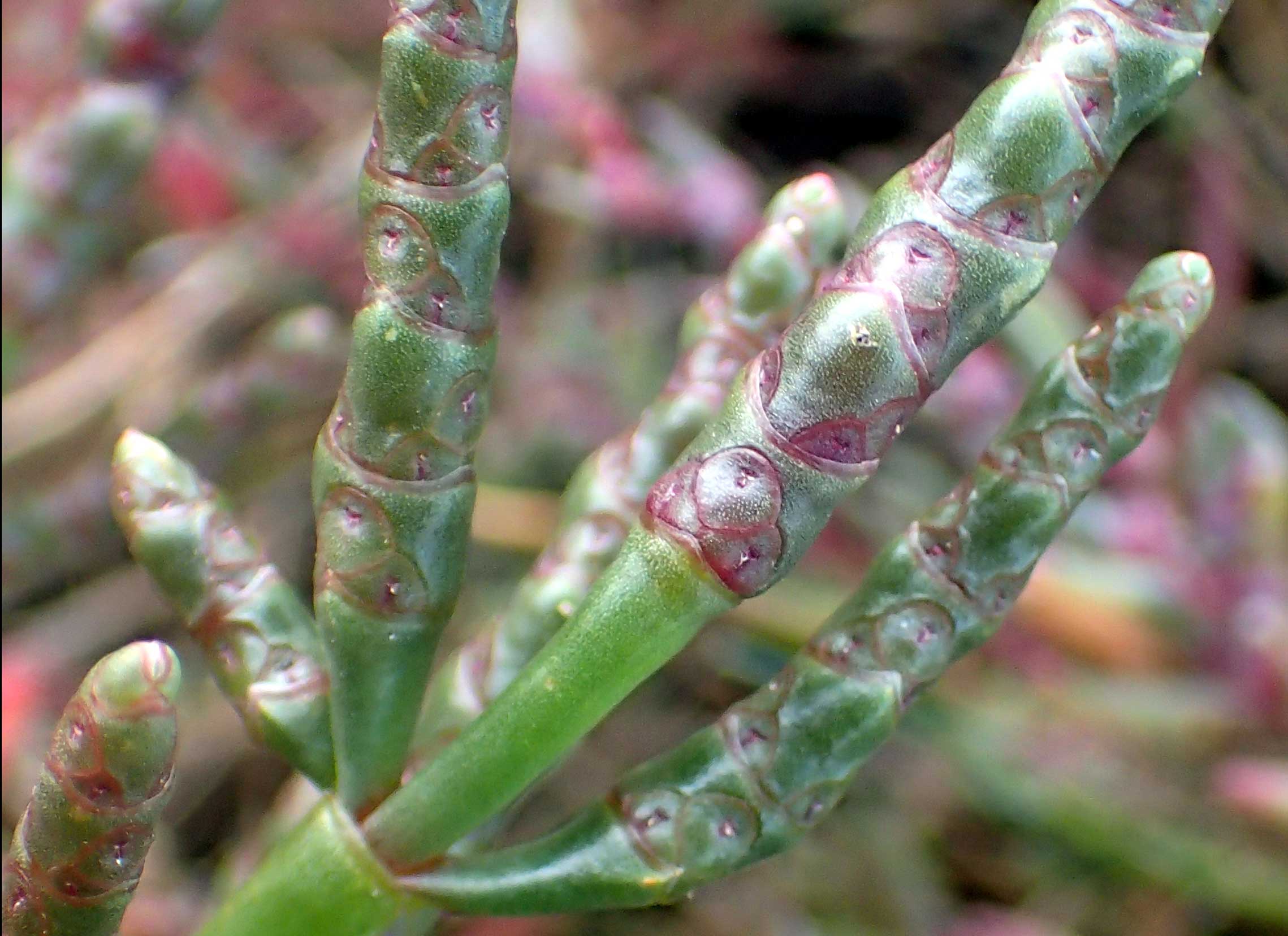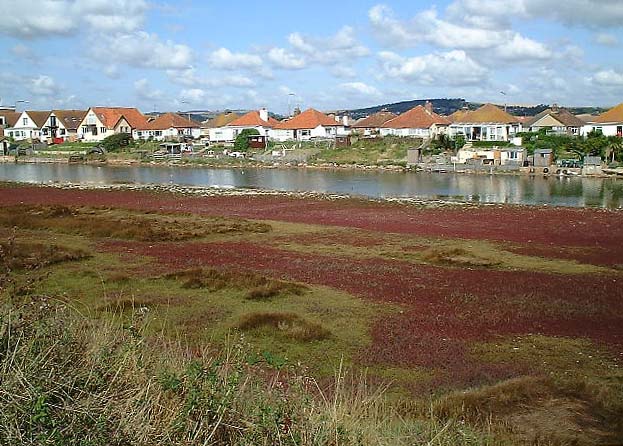Glasswort
28
September 2016

Widewater
27
September 2016


Widewater

River
Adur
18
September 2016

Sea
Blite, Glasswort
Orache
(left)
(unidentified)
Adur
Orache

|

|
|
Glasswort
|
Sea
Blite
|

Glasswort
showing the three flowers
LOCAL
SPECIES RECORDED
Salicornia
dolichostachya BUSHY GLASSWORT
Salicornia
europaea GLASSWORT
Salicornia
pusilla FRAGILE GLASSWORT
in
Flora
of Shoreham-by-Sea (List)

Glasswort,
Salicornia,
grows on the margins of
Widewater
Lagoon where patches turn red in autumn. There are several species
but this plant is so variable in appearance that it will need experts to
distinguish them to species level.


Glasswort
showing the varying appearances of the plant (September 2001)
The
plant on the far right is the young shoots of Sea Blite, Suaeda
maritima.
Click
on the image for a large view.
Glasswort
(Search Messages on UK Botany)
Message:
14
Date: Wed,
23 Jan 2002 19:11:25 -0000
From: "Ron
Tavender" <ron.tavender@talk21.com>
Subject: Re: Glasswort,
Salicornia
Hi,Andy,
You might care to try the
"Plant Crib" pub.
by BSBI 1988, ISBN 0 901158 17
8; this contains a good
key to a very difficult genus, based on Francis
Rose's key of 1984, and
updated by J.R. Ackroyd.
Ron.
ron.tavender@talk21.com
Plant
Crib information on Glasswort 1998 (Adur
Biodiversity Network members only)
Salicornia
Plant
Crib
________________________________________________________________________
________________________________________________________________________
Message: 15
Date: Wed,
23 Jan 2002 19:25:43 -0000
From: "Ron
Tavender" <ron.tavender@talk21.com>
Subject: Re: Red Glasswort

Andy -
Your "carpets of red" seem
to suggest Salicornia ramosissima or S. europaea.
Mainly in middle and upper
sections of saltmarshes. S. ramosissima is one of three spp. in
the
S. europaea group, the other two being S. europaea and
S.obscura.
The latter does not redden.
The best of luck!
Ron.
ron.tavender@talk21.com
________________________________________________________________________
________________________________________________________________________
Message: 16
Date: Wed,
23 Jan 2002 19:36:59 +0000
From: "pete.selby"
<pete.selby@ntlworld.com>
Subject: Re: Glasswort,
Salicornia
http://groups.yahoo.com/group/UKBotany/message/822
Andy,
I have had some experience
of identifying Salicornias and have been
consulting with Francis
Rose and also using the excellent key in The
Plant Crib, Rich & Jermy.
I have looked at your picture
(above) and consider that the red salicornia on the
left is Salicornia ramosissima.
The other one is probably the same species
as it also has a waisted
appearance and of a similar size. Not all of the
plants turn red at the same
time. If it were smaller and more delicate and
only had a single flower
rather than a group of three and if it were at the
top edge of the saltmarsh
then it would be Salicornia pusilla. However
please note that there is
a prostrate form of S ramosissima which may be
confused with it and also
note that S ramosissima and S pusilla hybridize and
in this case some flowers
are in groups of three and others are single.
These are generally in the
fixed part of the saltmarsh and a completely
different range of plants
occupy the bare mud.
Salicornia europaea, which
has slenderer branches but forms a larger plant.
Salicornia fragilis and Salicornia
dolichostachya which re not waisted and
usually dull.
Salicornia obscura and Slicornia
nitens (Not too sure about these two)
and finally Sarcocornia perennis,
which has some infertile shoots as well as
flowering ones and usually
forms a bushy clump.
None are scheduled although
a couple are classed as scarce, because of their
limited distribution.
They can only be accurately determined for the short
period from flowering until
the first frost, usually the month of October.
If you need to get determination
they travel well through the post if placed
in a slightly inflated sealed
plastic bag. Experiments with freeze drying to
obtain a reference collection
have so far not been successful as the plants
dry out and most characteristics
are lost.
Please get in touch if I
can help in any other ways.
Pete
Selby
BSBI VC Recorder S Hampshire
Herbal
Information
26
September 2007
Widewater
at dusk showing the red Glasswort at
the edge of the lagoon. Because the lagoon is in flood there is much less
of this to be seen than in previous years. |
 |
River
Adur Estuary (October 2004)
Mudflats
page
Adur
Estuary











